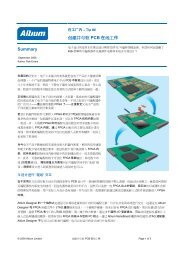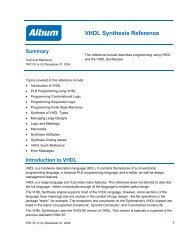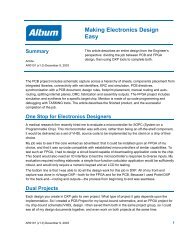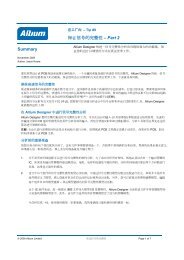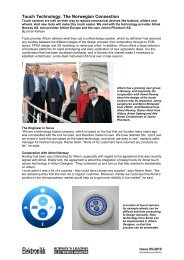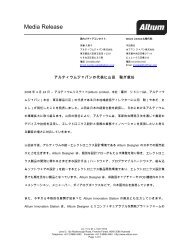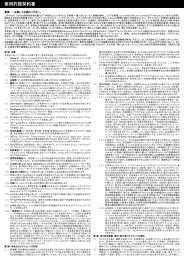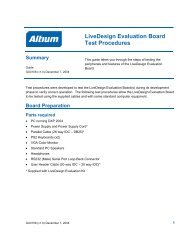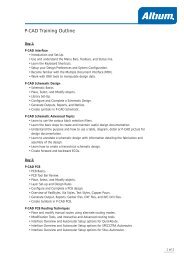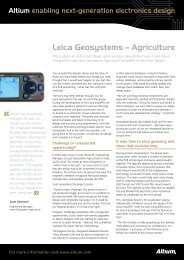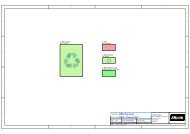TASKING C166 ELF-DWARF APPLICATION BINARY INTERFACE
TASKING C166 ELF-DWARF APPLICATION BINARY INTERFACE
TASKING C166 ELF-DWARF APPLICATION BINARY INTERFACE
You also want an ePaper? Increase the reach of your titles
YUMPU automatically turns print PDFs into web optimized ePapers that Google loves.
<strong>TASKING</strong> <strong>C166</strong><br />
<strong>ELF</strong>-<strong>DWARF</strong> <strong>APPLICATION</strong> <strong>BINARY</strong> <strong>INTERFACE</strong><br />
are advised to just use the number specified in the Common Information<br />
Entry (CIE).)<br />
The return address can be calculated using the appropriate rule in the<br />
standard way. It is stipulated here that the calculated quantity is always a<br />
32-bit linear address, also for near functions, where the actual value saved<br />
on the stack is only 16 bits wide. In other words, the width of this virtual<br />
register is 32 bits in the same way that the width of R0 is 16 bits. (This is<br />
in line with what was stipulated in Section "Addresses" above.) Knowing<br />
this width is necessary in particular when the rule for the return address<br />
defines a memory location (as opposed to a value): 32 bits must be read<br />
from that location.<br />
When a function has debug information, but there is no rule for the return<br />
address register or it is explicitly DW_CFA_undefined, that function is the<br />
topmost function on the stack. (That is, stack unwinding should stop<br />
there.)<br />
2.5.6 Determining Stack Pointer Register Values<br />
The values of the system (SP) and user (R15) stack pointer registers in<br />
higher frames can be determined in exactly the same way as those of<br />
other registers. For example, an empty huge function will have a rule<br />
which states that the value of SP (289) in this frame's caller is this frame's<br />
SP value plus 4, i.e. the "stack delta" is 4. The same applies to R15.<br />
Note that although SP and R15 are used as stack pointers, the values<br />
calculated from these rules should not be confused with the "abstract", 32bit<br />
wide stack pointers. The rules simply yield 16-bit values in exactly the<br />
same way as they do for e.g. R0.<br />
2.5.7 SPSEG<br />
Some derivatives use SPSEG to determine which segment is used for the<br />
system stack, while other derivatives do not have this SPSEG register. This<br />
should be entirely transparent to the debugger implementer because<br />
SPSEG is referenced in the appropriate rules only where and when<br />
necessary.<br />
2.5.8 Near Data Addresses<br />
When R15 is used as a (stack) pointer by the processor itself (e.g. when<br />
pushing or popping), the processor uses one of four DPP registers to<br />
determine the linearized address. This page addressing is implicit then, but<br />
119-EDABI 1.4 Released page 16 of 19 2008-09-04



